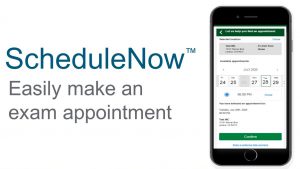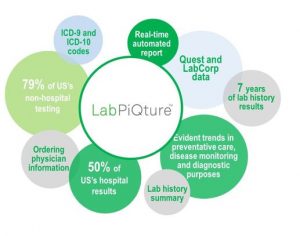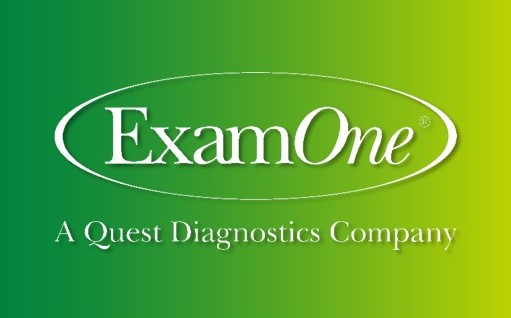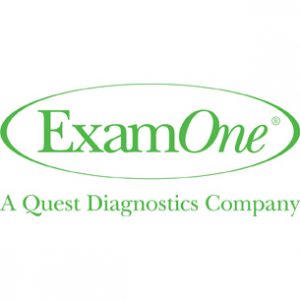Authored by: Doug Ingle, FALU, FLMI, Doug Ingle Underwriting Research LLC
Executive Summary
A recent article published by Clinical Reference Lab and ExamOne showed the protective value for tobacco testing exceeded $4 billion. Using the same time frame (2015-2022) and 18 million record dataset, we now describe the additional value associated with testing for undiagnosed diabetes and hypertension worth $2.6 billion. The protective value for just these three findings alone identifies over $6.7 billion of excess mortality that cannot be found elsewhere in the underwriting file.
There are millions of Americans with diabetes or high blood pressure who are unaware they are at risk. Paramed exams and blood work can help identify these individuals. A new study captures value in the insurance applicant population, and is made possible through a joint collaboration of American Para Professional Systems, Clinical Reference Labs, ExamOne, and IMS Paramed.
Undiagnosed Diabetes
According to a 2020 National Diabetes Statistics Report from the CDC[i], 34.1 million members of the adult US population (13.0%) have diabetes and 2.8% (7.3 million) don’t know it. That means 21.5% of diabetics are unaware of their risk. The laboratory readings used to identify diabetics in this CDC study were a HbA1c of 6.5% or greater or a fasting plasma glucose of 126 mg/dL or greater. Life insurance applicants may not be fasting at time of blood draw. Therefore, HbA1c of 6.5% or higher and glucose of 200 mg/dl or greater are used to identify diabetes based on insurance lab testing. Applying these metrics to the insurance applicant data, and using the lab slip answer to the question about a known history of diabetes, identifies individuals unaware of their diabetes in an insurance applicant setting. Surprisingly, 27.8% with abnormally high readings did not report a history of diabetes on their lab slip.
Underwriting ratings are derived by averaging debits from several underwriting manuals and capped at 300 debits for the highest risks. Glycemic values are considered non-fasting at time of blood draw, further reducing debit assignments. Protective value is limited to applicants that don’t admit to a history of diabetes while generating ratable findings. That means, value is limited to substandard mortality risk only. This study makes no attempt to define additional mortality value associated with preferred risk classes. Debits are converted to present value mortality dollars using the 2015 VBT (Valuation Basic Table) ALB (Age Last Birthday) smoker distinct tables with a 3% interest and 3% lapse rate and 10-year pricing horizon. Insurance face amounts are based on the lab slip.
These surprise findings generate $1,577,046,959 of present value of future mortality for the first 10-years post issue.
Undiagnosed Hypertension
High blood pressure is known as the silent killer. According to the National Center for Health Statistics (NCHS) News Brief 278[ii], 29% of U.S. adults had hypertension and 15.9% were unaware of their high blood pressure. In this NCHS study, hypertension is defined as a blood pressure reading of 140/90 or greater. Using the lab slip question to identify applicants that admit to a history of hypertension, we find that 14.9% of insurance applicants with readings of 140/90 or greater said they did not have high blood pressure on the lab slip.
This study also applies average blood pressure ratings from several underwriting manuals and the debits are converted to protective value dollars using the same VBT metrics as those used in the diabetes study. These debits, are reserved for substandard (not preferred) findings, and only counted if the applicant has not admitted to a history of high blood pressure. Were it not for testing, these mortality risks would play out undetected.
The present value of future mortality associated with unknown high blood pressure is $1,067,475,196 for the first 10 years post issue.
Summary
Adding mortality dollars from the hypertensive and diabetes studies together, results in a total benefit of $2,644,522,155 for the first 10-years post issue on a present value basis for these 18 million applicants from years 2015-2022. Value is restricted to surprise findings. This testing provides another avenue for identifying undetected medical conditions in society. When added to the $4,086,029,825 of protective value associated with cotinine testing, this results in a grand total of $6,730,551,980 of protective value from tobacco, diabetes, and blood pressure testing alone. These findings represent just 3 of many tests performed at time of physical examination and fluid draw that cannot be unmasked by other underwriting evidence.
[i] https://www.cdc.gov/diabetes/pdfs/data/statistics/national-diabetes-statistics-report.pdf. Accessed 11-1-2022.
[ii] https://www.cdc.gov/nchs/products/databriefs/db278.htm. Accessed 11-1-2022.


















Authored by: Doug Ingle, FALU, FLMI, Doug Ingle Underwriting Research LLC
Executive Summary
A recent article published by Clinical Reference Lab and ExamOne showed the protective value for tobacco testing exceeded $4 billion. Using the same time frame (2015-2022) and 18 million record dataset, we now describe the additional value associated with testing for undiagnosed diabetes and hypertension worth $2.6 billion. The protective value for just these three findings alone identifies over $6.7 billion of excess mortality that cannot be found elsewhere in the underwriting file.
There are millions of Americans with diabetes or high blood pressure who are unaware they are at risk. Paramed exams and blood work can help identify these individuals. A new study captures value in the insurance applicant population, and is made possible through a joint collaboration of American Para Professional Systems, Clinical Reference Labs, ExamOne, and IMS Paramed.
Undiagnosed Diabetes
According to a 2020 National Diabetes Statistics Report from the CDC[i], 34.1 million members of the adult US population (13.0%) have diabetes and 2.8% (7.3 million) don’t know it. That means 21.5% of diabetics are unaware of their risk. The laboratory readings used to identify diabetics in this CDC study were a HbA1c of 6.5% or greater or a fasting plasma glucose of 126 mg/dL or greater. Life insurance applicants may not be fasting at time of blood draw. Therefore, HbA1c of 6.5% or higher and glucose of 200 mg/dl or greater are used to identify diabetes based on insurance lab testing. Applying these metrics to the insurance applicant data, and using the lab slip answer to the question about a known history of diabetes, identifies individuals unaware of their diabetes in an insurance applicant setting. Surprisingly, 27.8% with abnormally high readings did not report a history of diabetes on their lab slip.
Underwriting ratings are derived by averaging debits from several underwriting manuals and capped at 300 debits for the highest risks. Glycemic values are considered non-fasting at time of blood draw, further reducing debit assignments. Protective value is limited to applicants that don’t admit to a history of diabetes while generating ratable findings. That means, value is limited to substandard mortality risk only. This study makes no attempt to define additional mortality value associated with preferred risk classes. Debits are converted to present value mortality dollars using the 2015 VBT (Valuation Basic Table) ALB (Age Last Birthday) smoker distinct tables with a 3% interest and 3% lapse rate and 10-year pricing horizon. Insurance face amounts are based on the lab slip.
These surprise findings generate $1,577,046,959 of present value of future mortality for the first 10-years post issue.
Undiagnosed Hypertension
High blood pressure is known as the silent killer. According to the National Center for Health Statistics (NCHS) News Brief 278[ii], 29% of U.S. adults had hypertension and 15.9% were unaware of their high blood pressure. In this NCHS study, hypertension is defined as a blood pressure reading of 140/90 or greater. Using the lab slip question to identify applicants that admit to a history of hypertension, we find that 14.9% of insurance applicants with readings of 140/90 or greater said they did not have high blood pressure on the lab slip.
This study also applies average blood pressure ratings from several underwriting manuals and the debits are converted to protective value dollars using the same VBT metrics as those used in the diabetes study. These debits, are reserved for substandard (not preferred) findings, and only counted if the applicant has not admitted to a history of high blood pressure. Were it not for testing, these mortality risks would play out undetected.
The present value of future mortality associated with unknown high blood pressure is $1,067,475,196 for the first 10 years post issue.
Summary
Adding mortality dollars from the hypertensive and diabetes studies together, results in a total benefit of $2,644,522,155 for the first 10-years post issue on a present value basis for these 18 million applicants from years 2015-2022. Value is restricted to surprise findings. This testing provides another avenue for identifying undetected medical conditions in society. When added to the $4,086,029,825 of protective value associated with cotinine testing, this results in a grand total of $6,730,551,980 of protective value from tobacco, diabetes, and blood pressure testing alone. These findings represent just 3 of many tests performed at time of physical examination and fluid draw that cannot be unmasked by other underwriting evidence.
[i] https://www.cdc.gov/diabetes/pdfs/data/statistics/national-diabetes-statistics-report.pdf. Accessed 11-1-2022.
[ii] https://www.cdc.gov/nchs/products/databriefs/db278.htm. Accessed 11-1-2022.